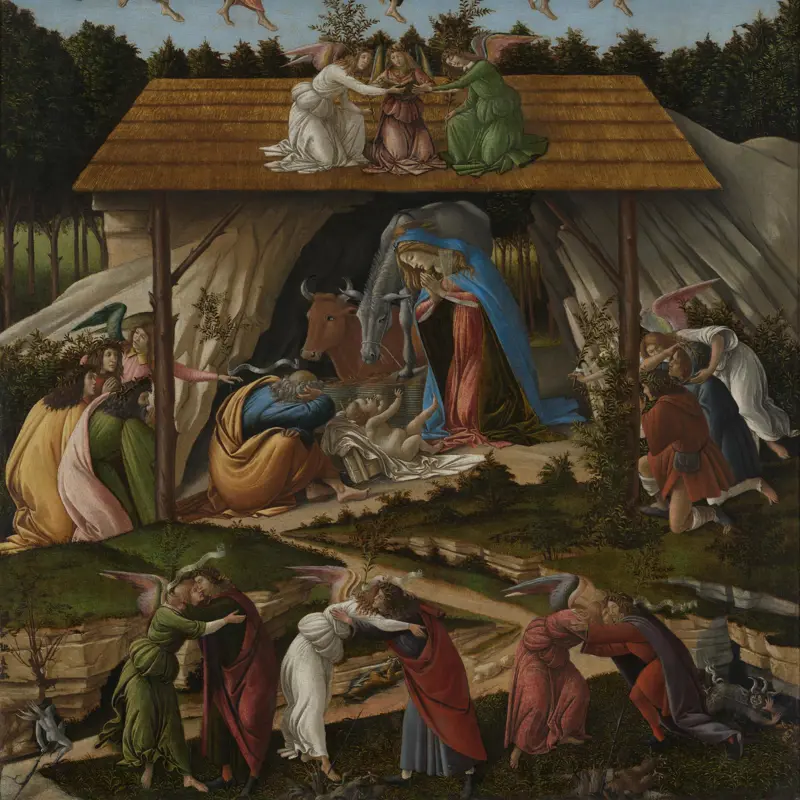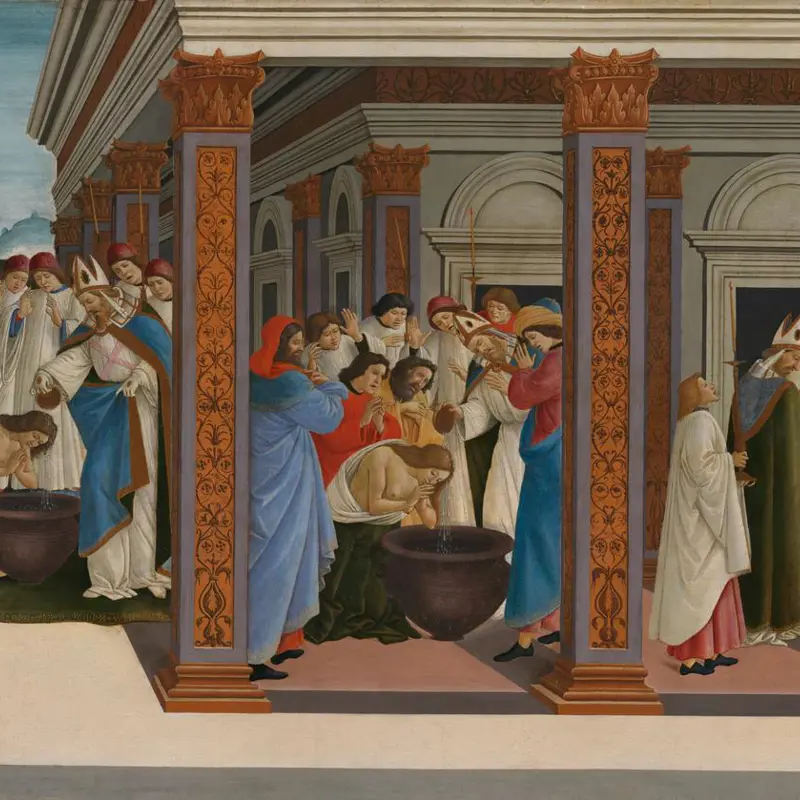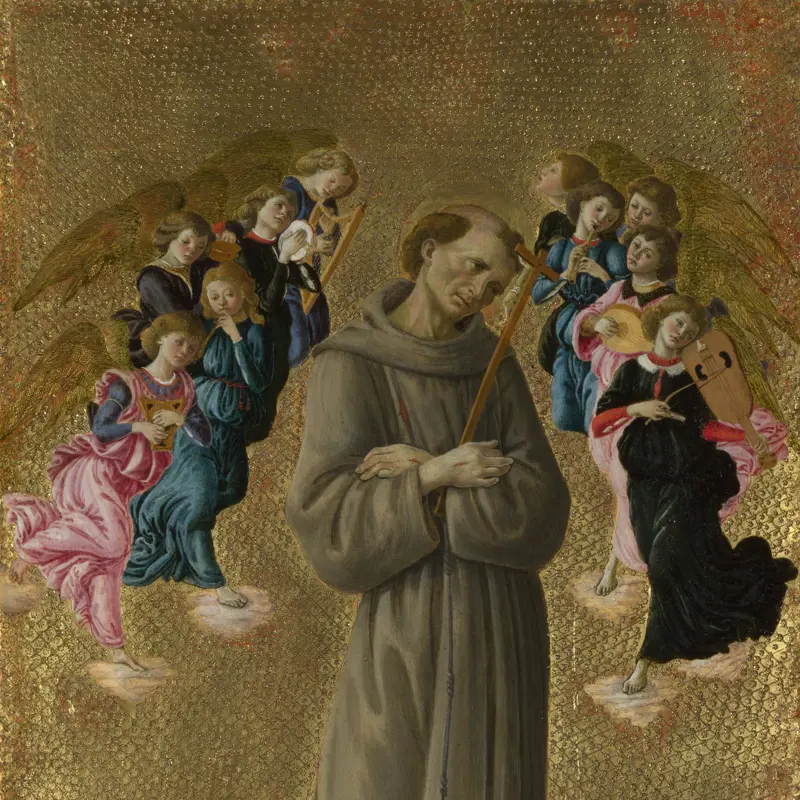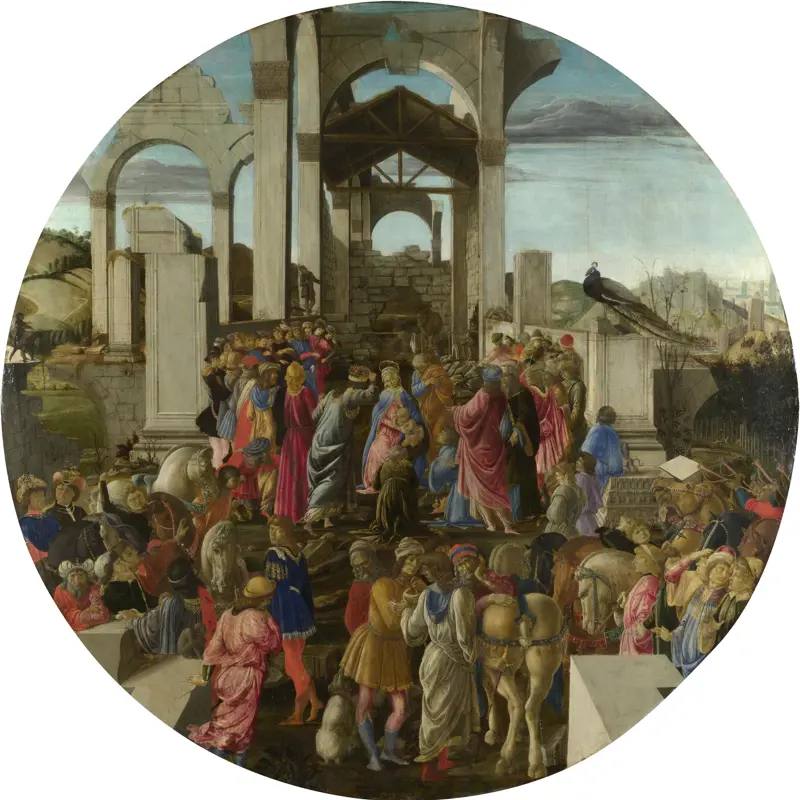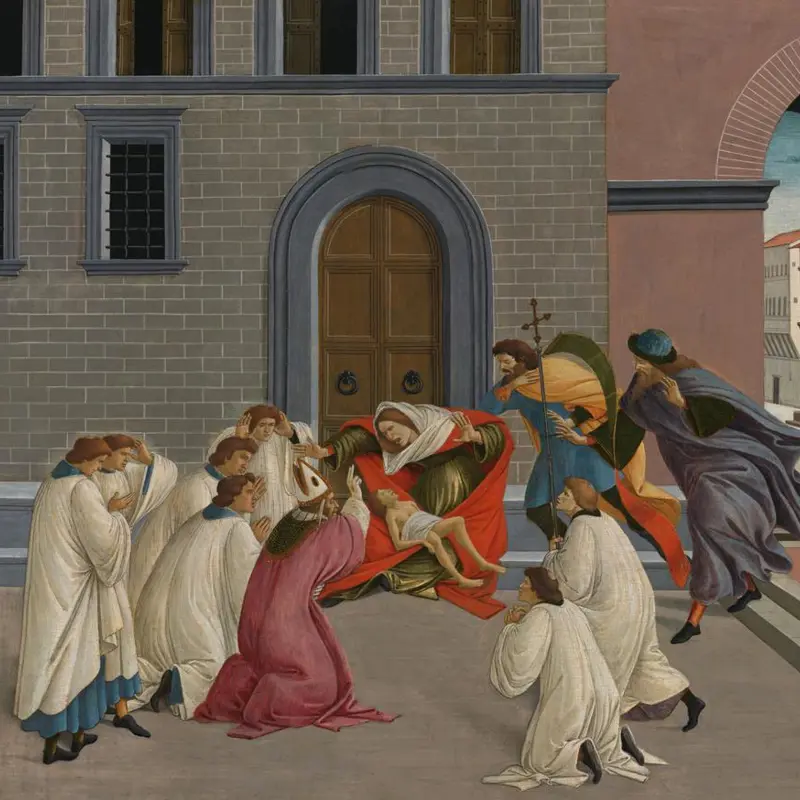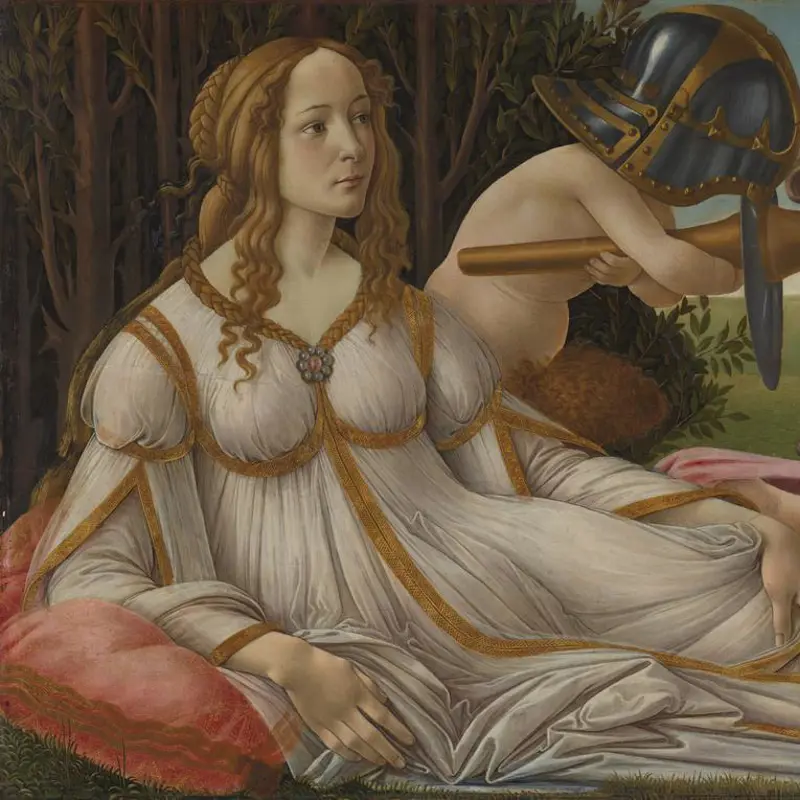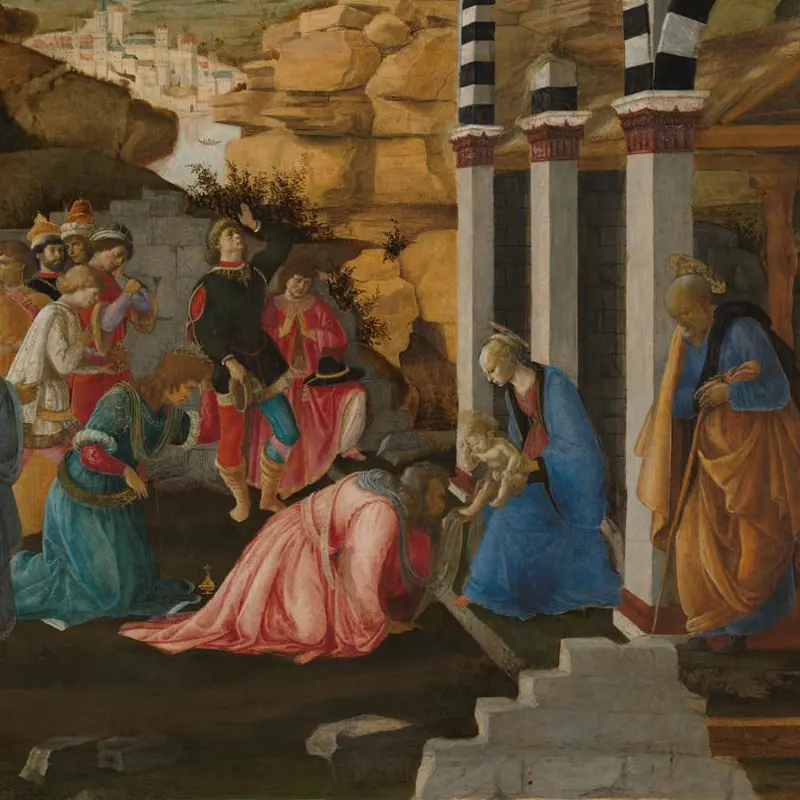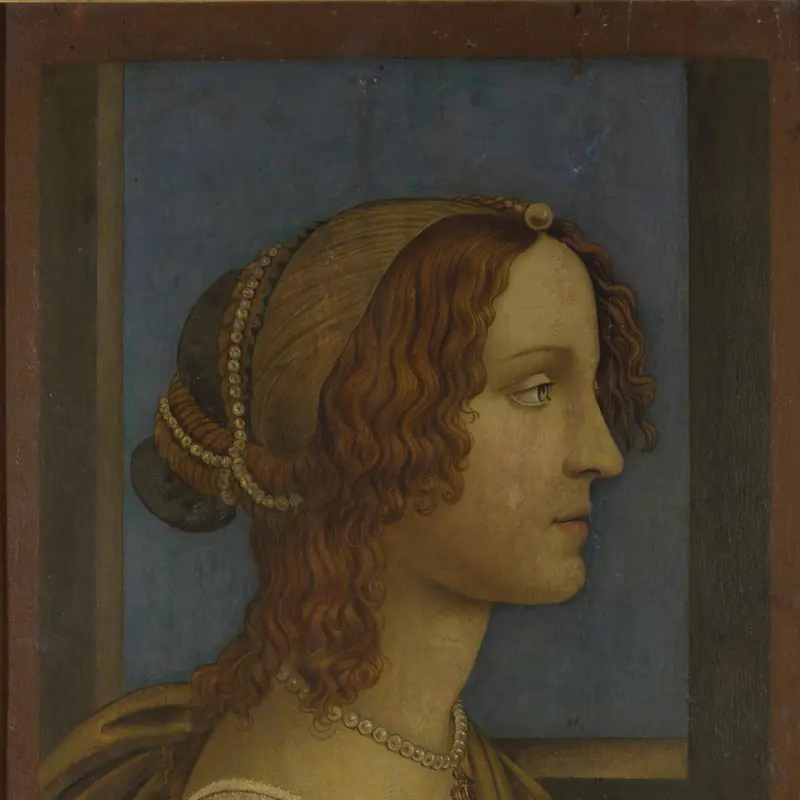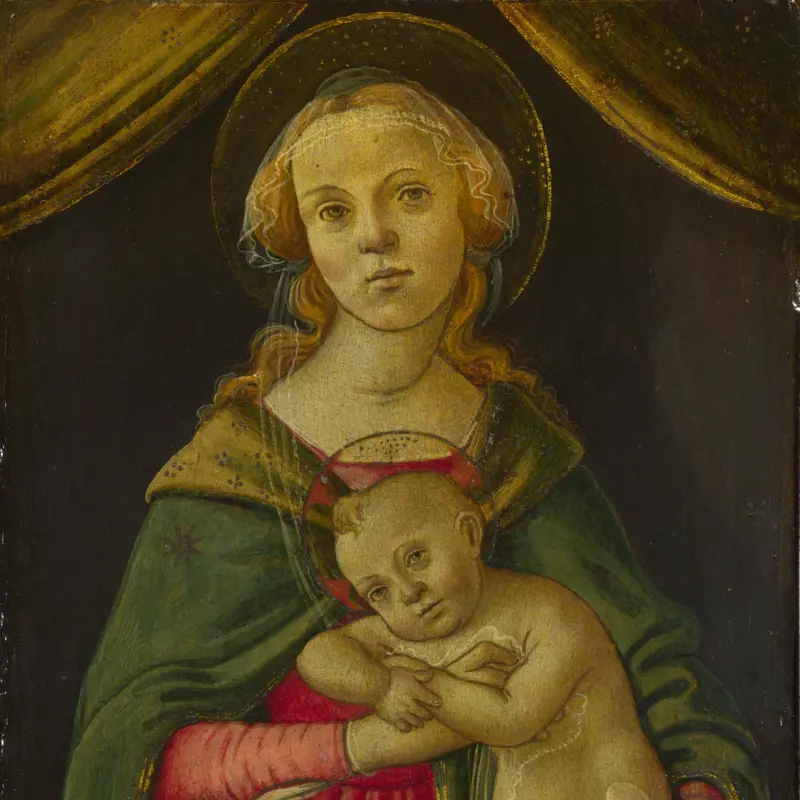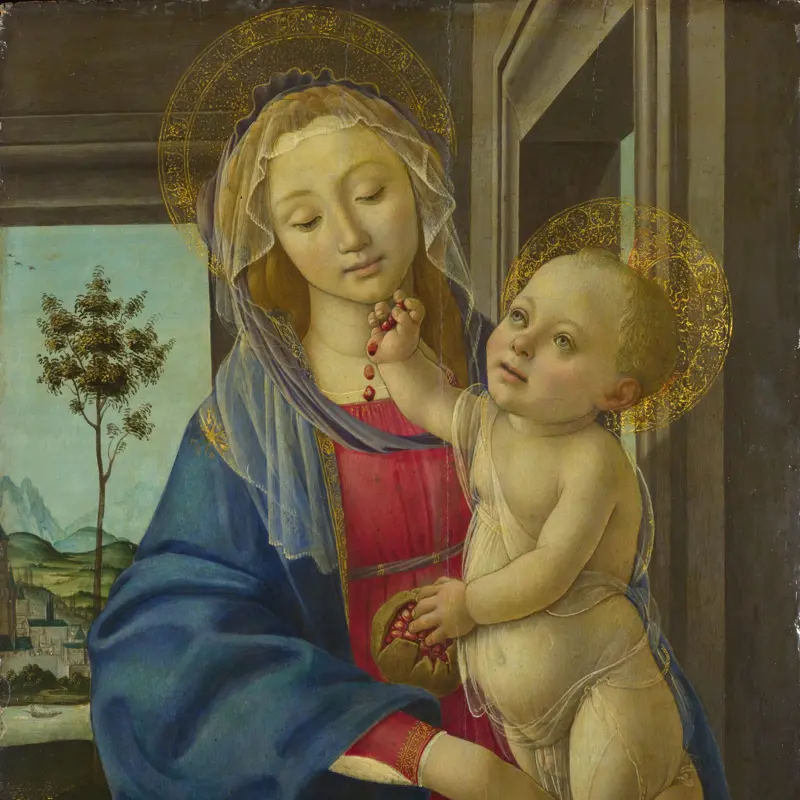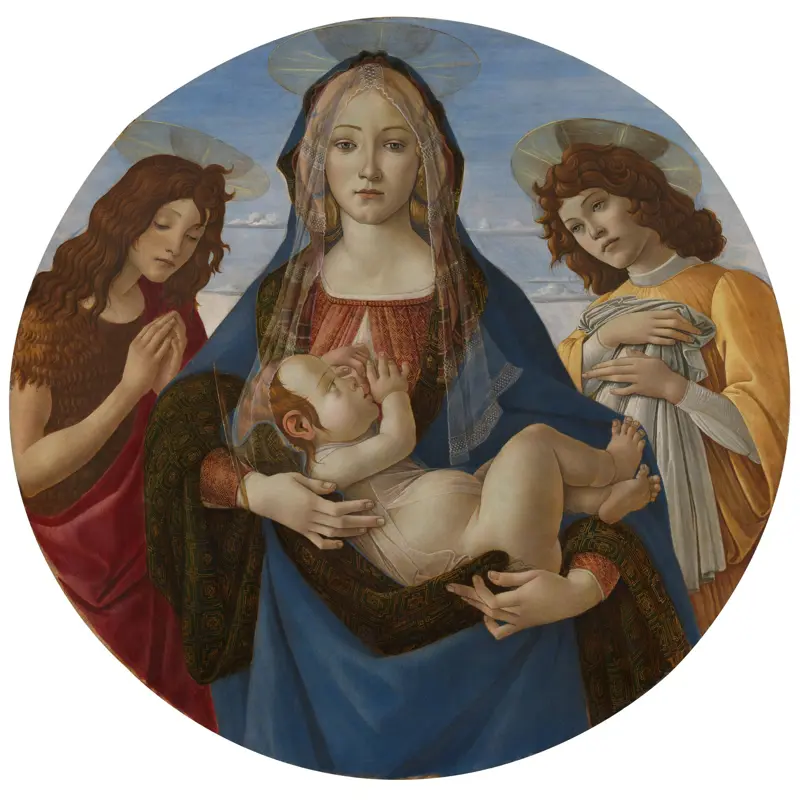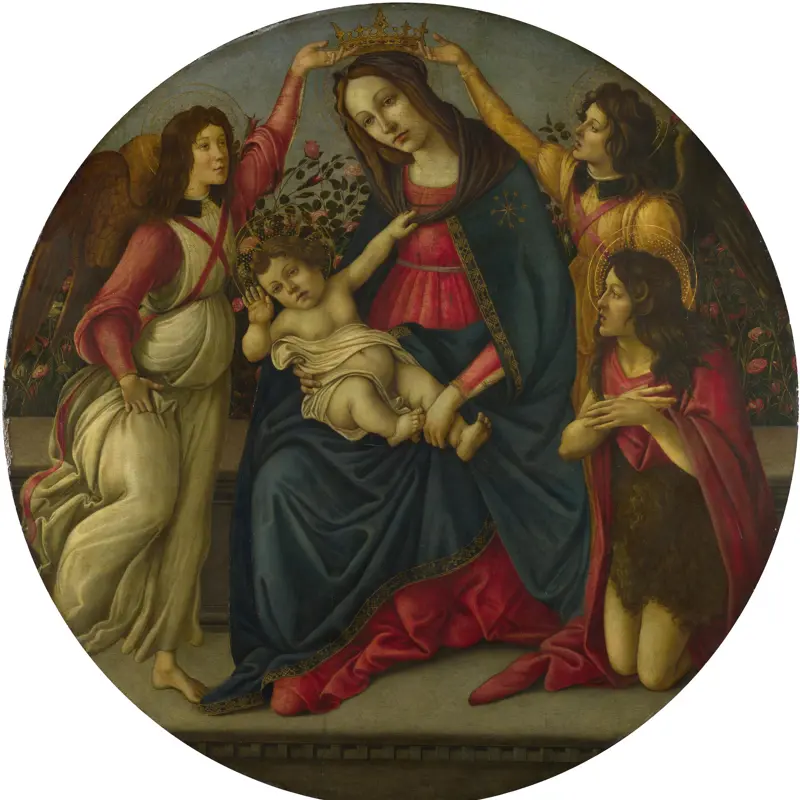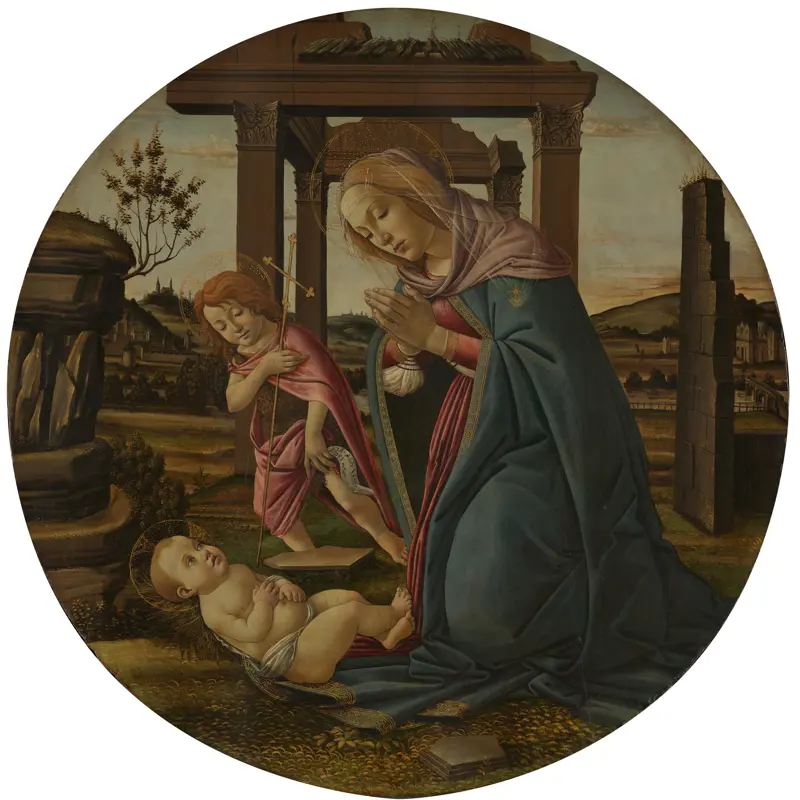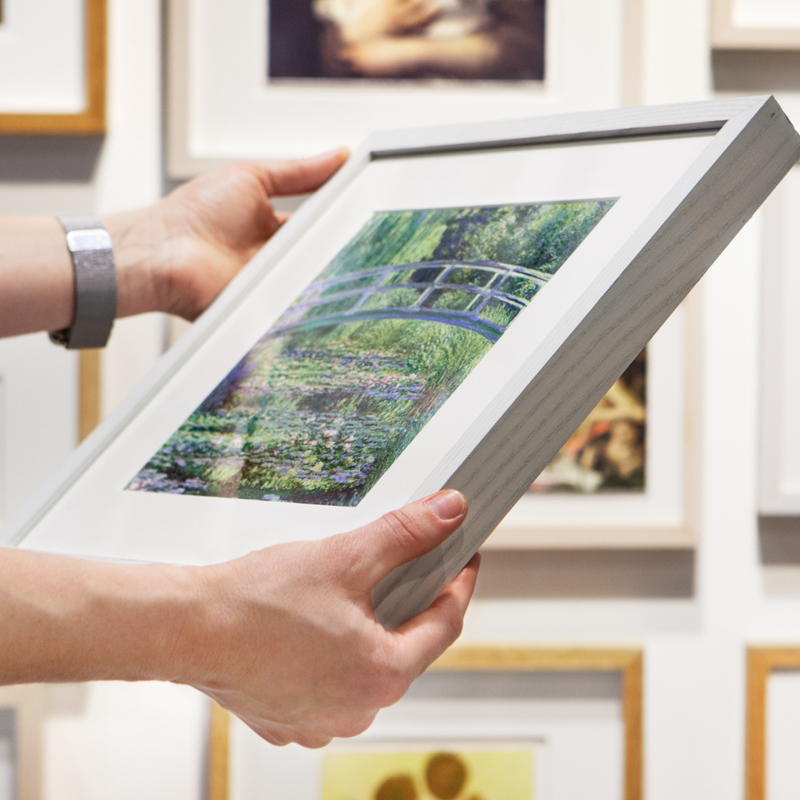Sandro Botticelli, 'Portrait of a Young Man', probably about 1480-5
About the work
Overview
This apparently simple portrait of a young man was revolutionary in Italian painting. Until this moment, artists painted people either in profile view, so only half their face was visible, or by turning them three-quarters to face the viewer.
Here, Botticelli paints the boy head on, mapping his whole face – the fleshy nose, dimpled cheeks, warm brown eyes and determined, protruding chin. Images of the whole face were usually reserved for so-called ‘portraits’ of Christ used for private prayer; showing a young man in such a way was radical.
The boy is dressed simply in brown, his dark blond curls escaping from beneath his red cap. His features are individual but his overall look resembles Botticelli’s idealised males, particularly Mars in his painting Venus and Mars, also in the National Gallery’s collection. Renaissance portraits often beautified their subjects because outward beauty was supposed to reflect inner virtue: the portrait was an eternal witness to the person’s soul as well as their appearance.
Key facts
Details
- Full title
- Portrait of a Young Man
- Artist
- Sandro Botticelli
- Artist dates
- About 1445 - 1510
- Date made
- Probably about 1480-5
- Medium and support
- Egg tempera and oil on wood
- Dimensions
- 37.5 × 28.3 cm
- Acquisition credit
- Bought, 1859
- Inventory number
- NG626
- Location
- Room 51
- Collection
- Main Collection
- Previous owners
- Frame
- 16th-century Italian Frame
Provenance
Additional information
Text extracted from the ‘Provenance’ section of the catalogue entry in Martin Davies, ‘National Gallery Catalogues: The Earlier Italian Schools’, London 1986; for further information, see the full catalogue entry.
Exhibition history
-
2008Renaissance Faces: Van Eyck to TitianThe National Gallery (London)15 October 2008 - 18 January 2009
-
2019Young Bomberg and the Old MastersThe National Gallery (London)27 November 2019 - 1 March 2020
Bibliography
-
1837G.F. Waagen, Kunstwerke und Künstler in England und Paris, vol. 1, Berlin 1837
-
1846'Visits to Private Galleries, XV: The Collection of the Right Hon. Lord Northwick, Thirlestane House, Cheltenham', Art Union, VIII, 1846
-
1854G.F. Waagen, Treasures of Art in Great Britain: Being and Account of the Chief Collections of Paintings, Drawings, Sculptures, Illuminated Mss. […], vol. 2, trans. E. Eastlake, London 1854
-
1858Hours in Lord Northwick's Picture Galleries: Being a Catalogue with Critical and Descriptive Notices of Some of the Principal Paintings in the Thirlestaine House Collection, Cheltenham 1858
-
1859Phillips, Catalogue of the Late Lord Northwick's Extensive and Magnificent Collection of Ancient and Modern Pictures…, Phillips, Thirlestane House, Cheltenham, 26 July 1859, Cheltenham, 26 July 1859 - 30 August 1859
-
1883J.P. Richter, Italian Art in the National Gallery, London 1883
-
1893H.C. Ulmann, Sandro Botticelli, Munich 1893
-
1903J.A. Crowe and G.B. Cavalcaselle, A History of Painting in Italy, Umbria, Florence and Siena, from the Second to the Sixteenth Century, ed. R.L. Douglas, 2nd edn, 6 vols, London 1903
-
1908H. Horne, Allessandro Filipepi, Commonly Called Sandro Botticelli, Painter of Florence, London 1908
-
1923R. van Marle, The Development of the Italian Schools of Painting, 19 vols, The Hague 1923
-
1948J. Alazard, The Florentine Portrait, London 1948
-
1951Davies, Martin, National Gallery Catalogues: The Earlier Italian Schools, London 1951
-
1958R. Salvini, Tutta la pittura del Botticelli, Milan 1958
-
1960M. Levey, 'Botticelli and Nineteenth Century England', Journal of the Warburg and Courtauld Institutes, XXIII/3-4, 1960, pp. 291-306
-
1961M. Davies, The Earlier Italian Schools, 2nd edn, London 1961
-
1966J. Pope-Hennessy, The Portrait in the Renaissance, New York 1966
-
1978R. Lightbown, Sandro Botticelli, London 1978
-
1986Davies, Martin, National Gallery Catalogues: The Earlier Italian Schools, revised edn, London 1986
-
1987B. Cole, Italian Art 1250-1550: The Relation of Renaissance Art to Life and Society, New York 1987
-
1987R. Stapleford, 'Botticelli's Portrait of a Young Man Holding a Trecento Medallion', The Burlington Magazine, CXXIX/1012, 1987, pp. 428-36
-
1989R. Lightbown, Sandro Botticelli: Life and Work, 2nd edn, London 1989
-
1990L. Campbell, Renaissance Portraits: European Portrait-Painting in the 14th, 15th and 16th Centuries, New Haven 1990
-
1990C. Caneva, Botticelli: Catalogo completo dei dipinti, Florence 1990
-
1991J. Dunkerton et al., Giotto to Dürer: Early Renaissance Painting in the National Gallery, New Haven 1991
-
1991D. Thiébaut, Botticelli, Paris 1991
-
2001
C. Baker and T. Henry, The National Gallery: Complete Illustrated Catalogue, London 2001
-
2002O. Bradbury and N. Penny, 'The Picture Collecting of Lord Northwick: Part II' The Burlington Magazine, CXLIV/1195, October 2002, pp. 606-17
-
2004S. Ungheri and V. Vettori, Sandro Botticelli, Milan 2004
-
2005A. Cecchi, Botticelli, Milan 2005
-
2006H. Körner, Botticelli, Cologne 2006
-
2008L. Campbell et al., Renaissance Faces: Van Dyck to Titian (exh. cat., The National Gallery, London), London 2008
-
2008L. Syson et al., Renaissance Faces: Van Eyck to Titian (exh. cat. The National Gallery, 15 October 2008 - 16 January 2009), London 2008
About this record
If you know more about this work or have spotted an error, please contact us. Please note that exhibition histories are listed from 2009 onwards. Bibliographies may not be complete; more comprehensive information is available in the National Gallery Library.

